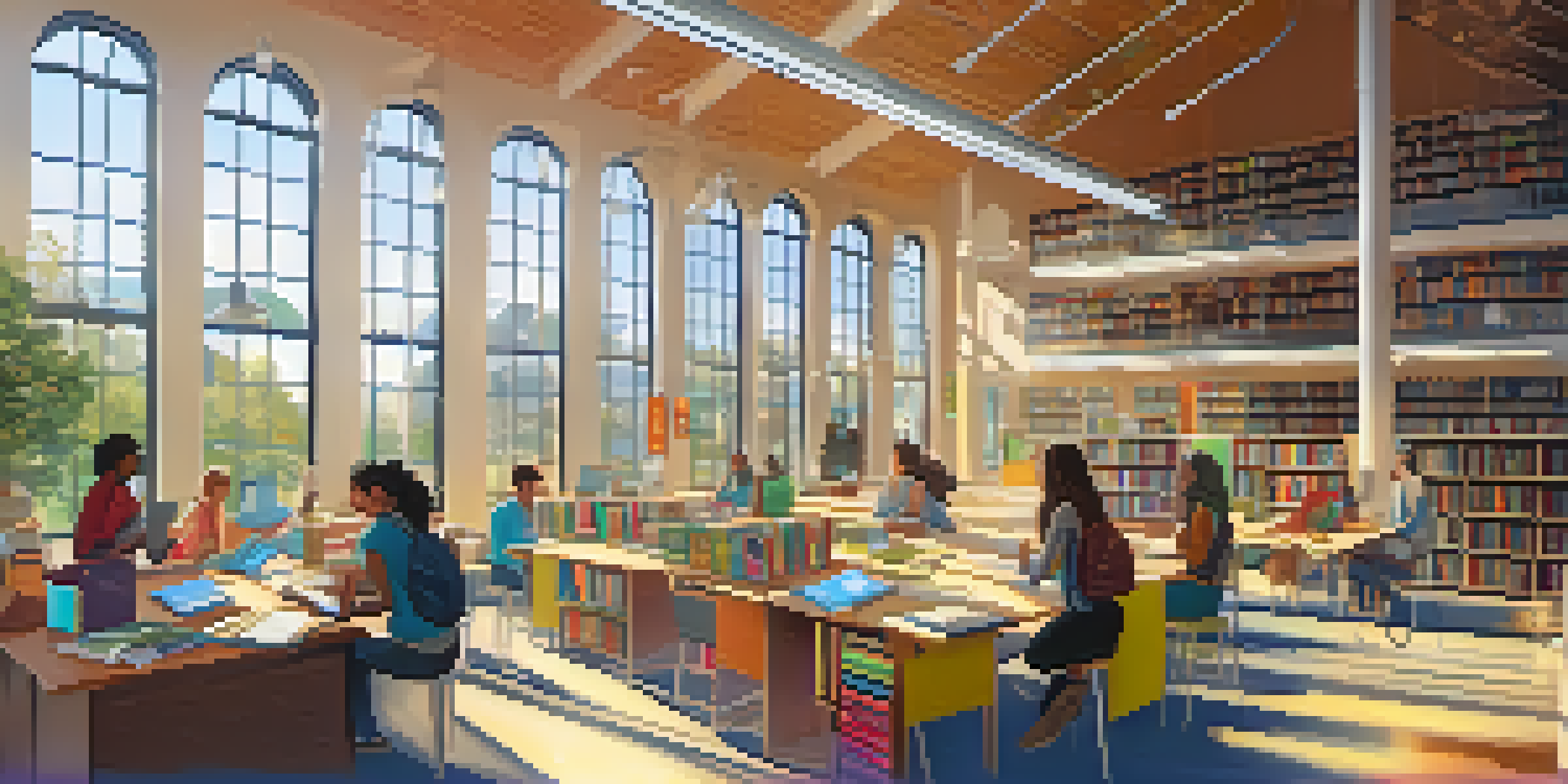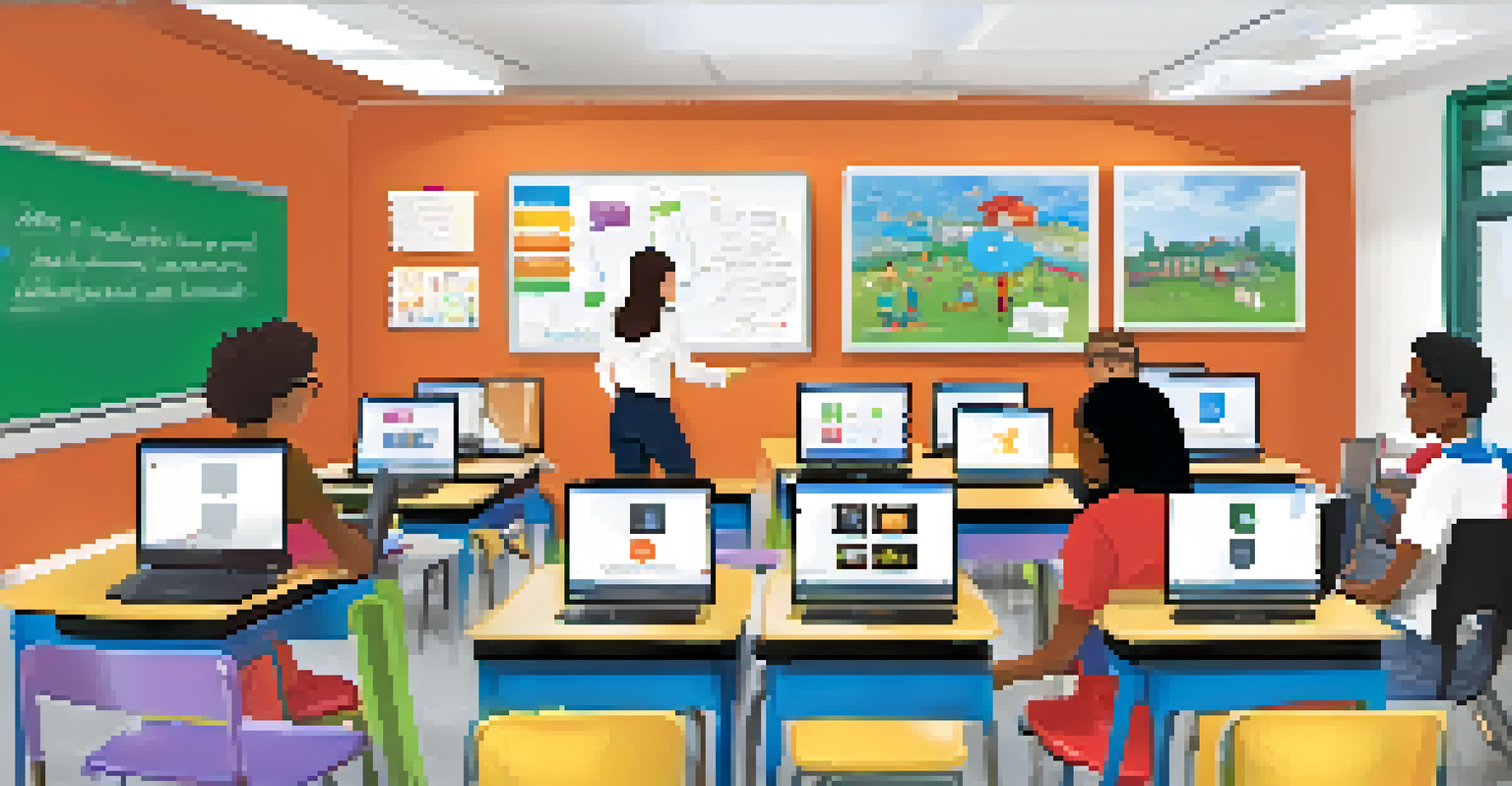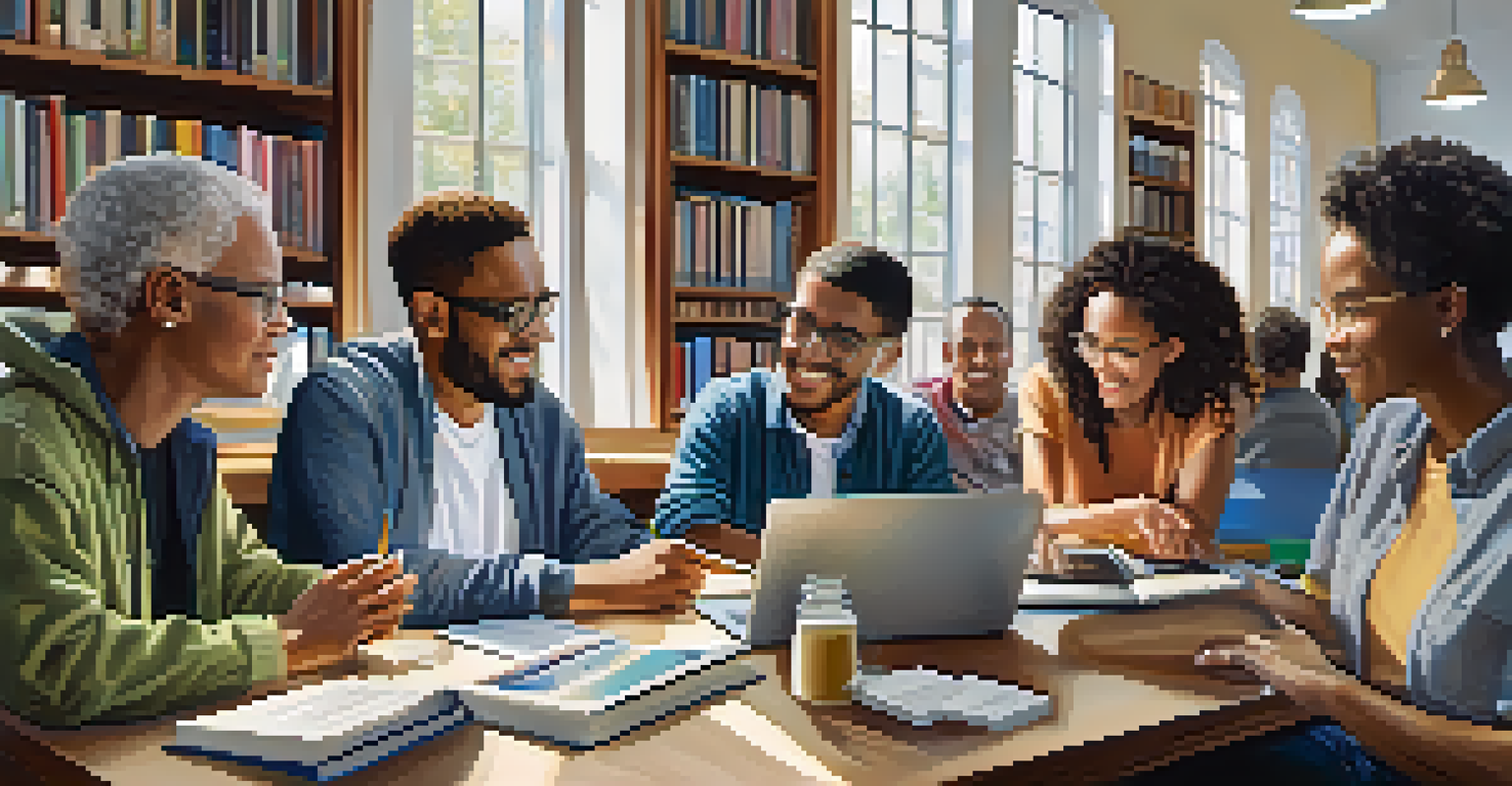The Importance of Open Educational Resources in Blended Learning

Understanding Open Educational Resources (OER)
Open Educational Resources (OER) are teaching, learning, and research materials that are freely available to everyone. They include a range of resources like textbooks, videos, and software designed to support education without cost barriers. The beauty of OER lies in their accessibility, allowing educators and students from diverse backgrounds to benefit equally.
Education is the most powerful weapon which you can use to change the world.
Imagine walking into a library where every book is free to borrow and share. This is akin to what OER offers in the digital age, breaking down the traditional barriers of educational materials. By leveraging OER, educators can provide varied content that caters to different learning styles, enhancing the overall educational experience.
As blended learning environments grow, understanding and utilizing OER becomes essential. They not only enrich the curriculum but also promote equity in education, ensuring that all learners have the resources they need to succeed.
The Role of OER in Blended Learning Models
Blended learning combines face-to-face instruction with online learning, creating a flexible educational environment. OER plays a significant role in this model by providing diverse, high-quality materials that can be easily integrated into both online and in-person settings. This flexibility allows educators to adapt resources to fit their teaching styles and student needs.

Think of OER as a toolbox filled with different tools for different tasks. In blended learning, teachers can select the most appropriate resources to enhance student engagement and understanding, whether in a physical classroom or a virtual one. This adaptability is crucial in catering to various learning paces and preferences.
OER Enhances Educational Access
Open Educational Resources (OER) provide free access to diverse learning materials, promoting equity in education.
Moreover, the incorporation of OER into blended learning promotes a more interactive and dynamic learning experience. Students are encouraged to explore and utilize these resources, fostering a sense of ownership over their learning journey.
Accessibility and Equity Through OER
One of the standout benefits of OER is its potential to promote accessibility and equity in education. By removing financial barriers to educational resources, OER ensures that all students have equal opportunities to access quality learning materials. This is especially pertinent in a blended learning environment where technology and resources can vary widely among students.
The beautiful thing about learning is that no one can take it away from you.
Picture a classroom where every student has access to the same high-quality resources, regardless of their background. OER helps make this a reality, allowing educators to provide materials that can reach every student, whether they are in a rural area with limited resources or in a well-funded urban school.
By prioritizing accessibility, OER not only enhances the learning experience but also contributes to closing the achievement gap. In blended learning, where technology is integral, equal access to resources becomes a stepping stone for all learners to thrive.
Encouraging Collaboration and Sharing
OER fosters a culture of collaboration among educators and students alike. When resources are openly available, teachers can share their materials, insights, and teaching strategies with one another. This collaborative spirit enriches the educational community and leads to improved teaching practices.
Imagine a network of teachers sharing their best practices and resources, much like a potluck dinner where everyone brings a dish to share. This collaboration not only enhances individual teaching but also benefits students by providing them with diverse perspectives and approaches to learning.
Collaboration Boosts Teaching Quality
OER fosters a collaborative environment where educators share resources and strategies, enriching the educational experience.
In blended learning environments, this sharing is even more critical. As educators integrate OER into their classrooms, they can collaborate on projects, share feedback, and continually refine their approaches to meet the needs of their learners.
Enhancing Engagement with Diverse Formats
OER encompasses a wide range of formats, including videos, interactive simulations, and text-based materials. This diversity in content types caters to different learning preferences and keeps students engaged. In a blended learning model, where motivation can sometimes wane, OER can provide the spark needed to ignite interest.
Think of OER as a buffet of educational options; students can choose what appeals to them most. This choice empowers learners, allowing them to take charge of their education and explore topics in ways that resonate with them.
Furthermore, the inclusion of multimedia resources can cater to visual and auditory learners, making the material more relatable and easier to grasp. This engagement is essential for effective learning, especially in blended environments where students often navigate both physical and digital spaces.
Supporting Lifelong Learning and Skill Development
OER not only supports formal education but also encourages lifelong learning. With resources readily available, individuals can continue to learn new skills or deepen their knowledge at any stage of life. This aligns perfectly with the principles of blended learning, which emphasizes ongoing education beyond traditional classroom settings.
Consider OER as a lifelong learning companion, providing individuals with the tools they need to adapt and grow. Whether someone is looking to upskill for a new job or explore a personal interest, OER makes it possible.
Diverse Formats Engage Learners
The variety of formats available in OER keeps students engaged and caters to different learning preferences.
In a rapidly changing world, the ability to learn and adapt is crucial. By integrating OER into blended learning, we empower individuals to become proactive learners, equipping them with the skills necessary for personal and professional success.
The Future of OER in Education
As education continues to evolve, the role of OER is expected to expand significantly. With advancements in technology and an increasing focus on personalized learning, OER will likely play a central role in shaping future educational landscapes. This shift will further enhance the blended learning experience, providing even more tailored resources to meet diverse student needs.
Picture a future where OER is seamlessly integrated into every educational framework, providing access to high-quality resources for all learners. This vision is not far-fetched, as more institutions recognize the value of open resources and the collaborative opportunities they present.

Ultimately, the future of education hinges on our ability to adapt and innovate. By embracing OER, we can not only enhance blended learning but also create a more equitable and effective educational system for generations to come.